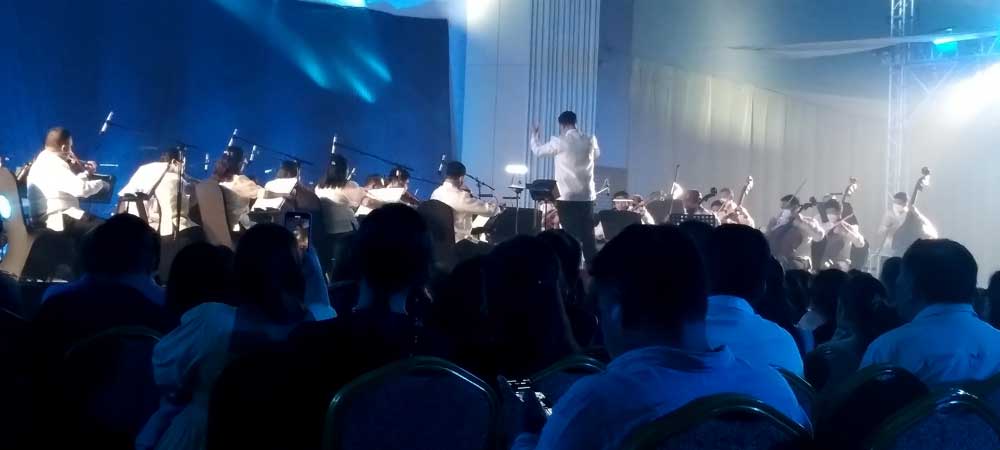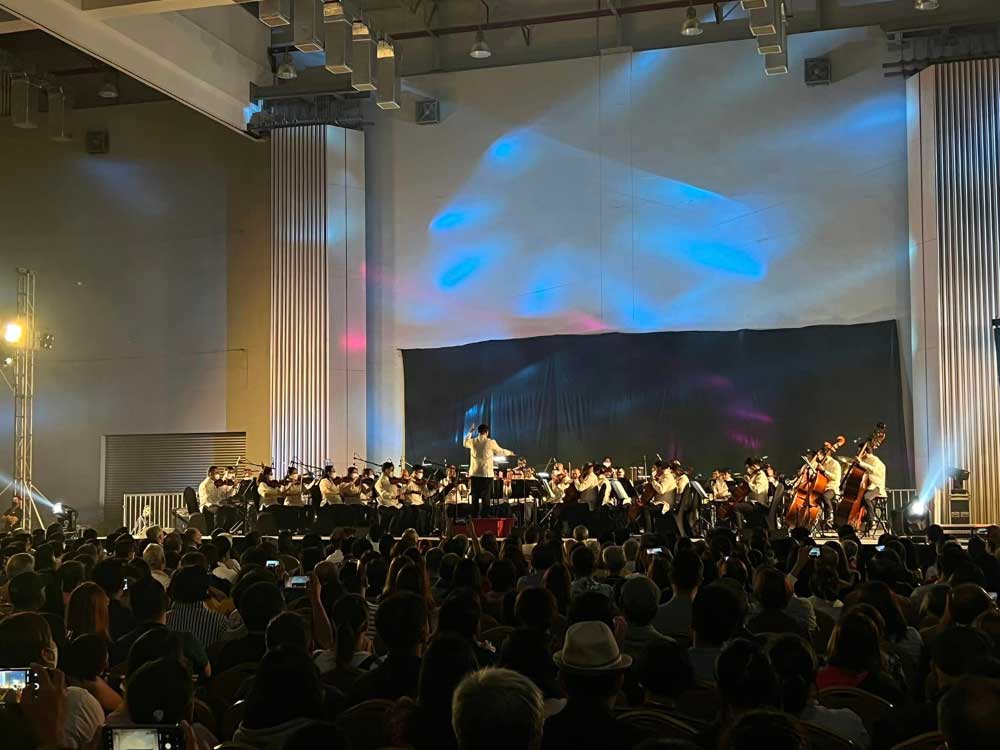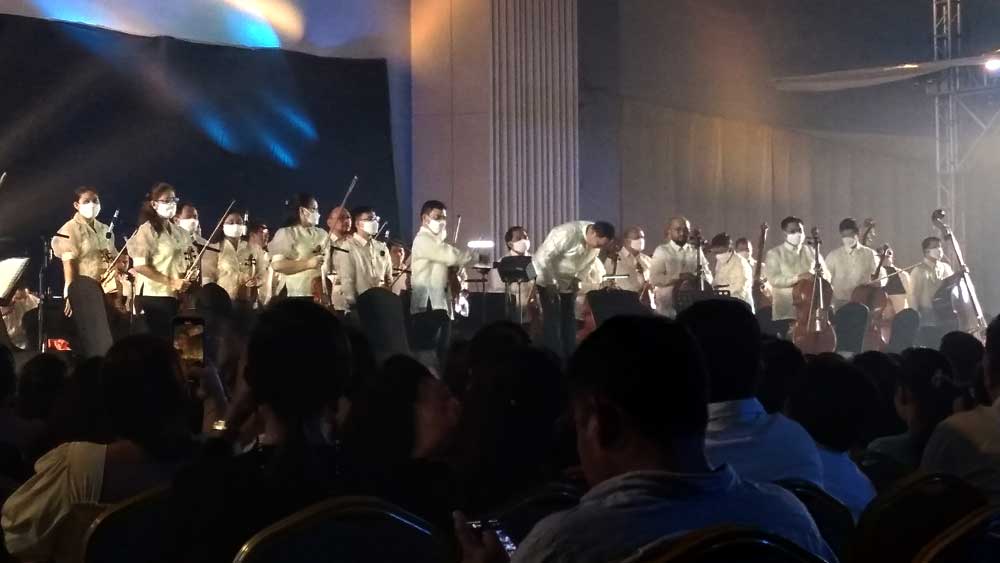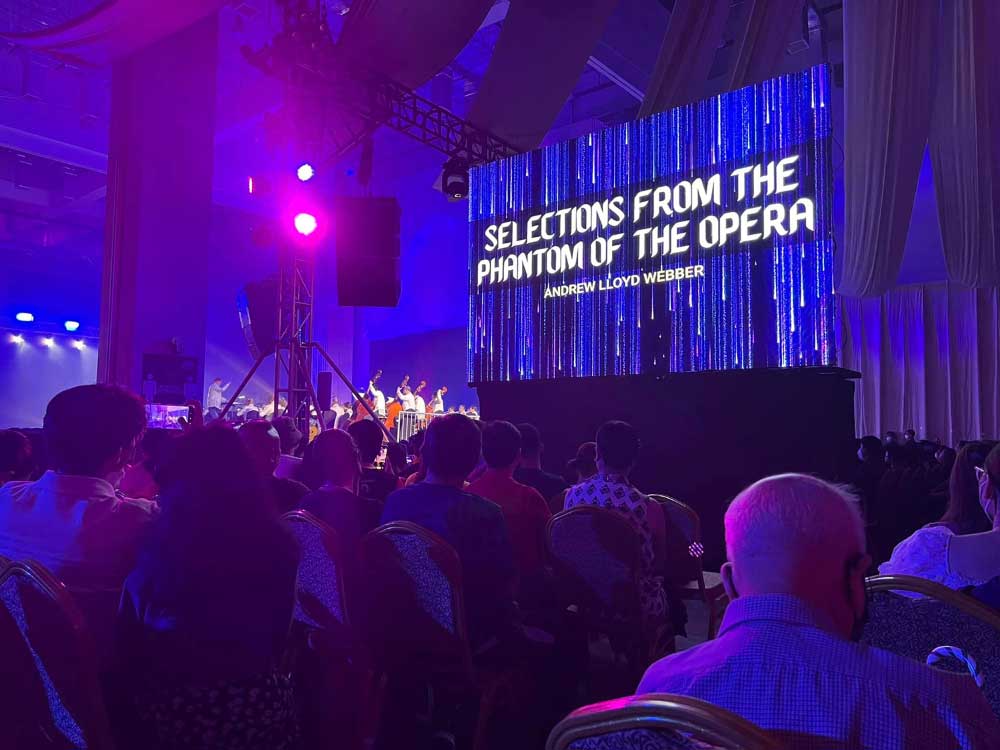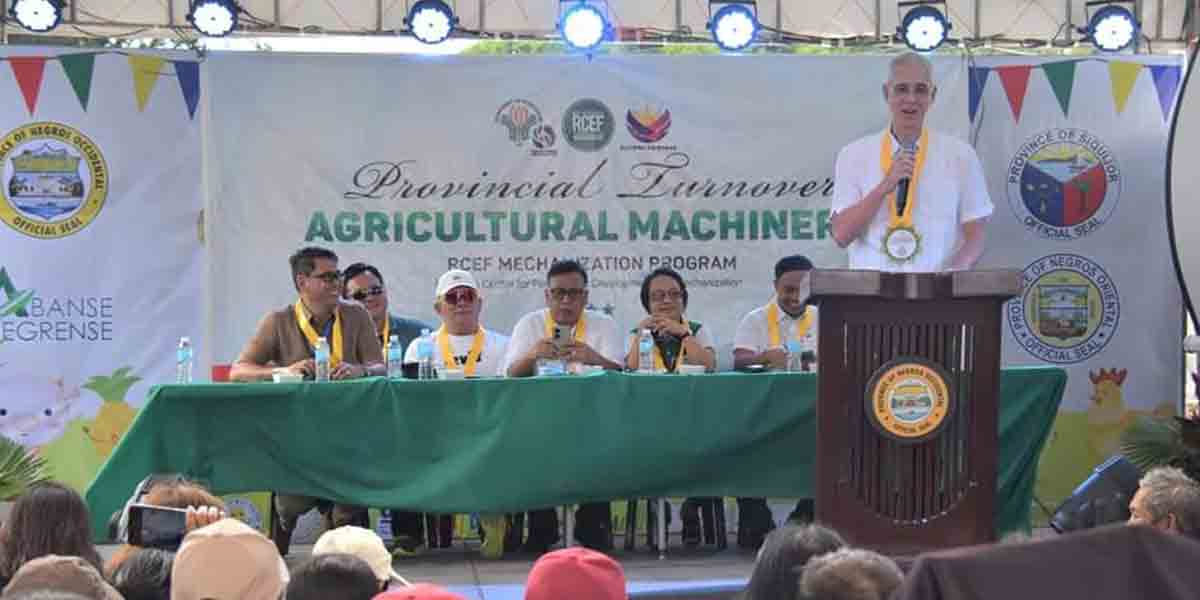By John Anthony Estolloso and Miguel Antonio Davao
Much as we want to put to rest the elitist perception of classical music, it is still a prevalent and pervading worldview in local circles that whatever sounds produced by an orchestra are reserved for the affluent and the cultured.
A musical divide still looms somewhere, and all the technicalities and nuances of the art form in between tend to widen that gap. The critics as an audience need but take their seats and read the movements in the concert hall to understand where this is coming from: observe what hushes the audience to respectful awe and what sets them on their feet.
Somehow, the Philippine Philharmonic Orchestra (PPO) managed to navigate through that gap on the evenings of January 13th and the 14th, and to a certain degree, pull classical music down from its lofty pedestal to make it more accessible and relatable to the modern Ilonggo audience.
Under the masterful baton of maestro Herminigildo Ranera, the orchestra plowed through an eclectic potpourri of canonical works, stage tunes, film scores, and suites of OPM songs arranged for a wider range and understandably, contemporary audiences.
To begin, overtures are tricky compositions – not so much because of the sheer weight of orchestration involved but rather on their function as both narrative and musical introduction to whatever opera or program that follows.
For one, they present at the onset the leitmotifs to be used in succeeding scenes, or in a concert, set the general mood of either reverent awe or sheer boredom. The PPO’s rendition of overtures by Franz von Suppe and Giuseppe Verdi (Poet and Peasant and Nabucco, respectively) are evocative at the very least. Both pieces captured the verve necessary to set the tone of the evenings: a limited seriousness peppered with continental bon vivre; no politics at all in these political operas. Still, one is tempted to brandish a raised fist when the melody of Va pensiero was played by oboe and clarinet in the Nabucco overture.
In a previous article, one critic has brazenly pointed out that opera is an acquired taste. Still, there is such a thing as the opera populaire, where the art form is relegated to mainstream pop culture, or worse, as a subject of lampoon and farce.
Georges Bizet’s Carmen would be one to sit on that throne: from the serious to the satirical, his feisty eponymous demimonde has weathered various renditions and the PPO’s delivery of selections from the musical narrative was exquisite to that effect. Bizet, with his partly Hispanophile heart, would have danced the seguidilla in his grave.
Of course, there is such a thing as popular classical music – those much-used and abused pieces of music that tend to surface in films, advertisements, cartoons, and poorly rendered techno remixes. Indeed, for most of us, these were our gateways to the appreciation of the masters: it was not surprising at all that Aram Khachaturian’s frenetic Sabre Dance or Peter Tchaikovsky’s languid Andante cantabile from his first String Quartet would surface in the middle of the musical program – if only to give us a hint of the fast and the familiar.
What concert would be complete about popular classical music without the homegrown melodies that were the musical scores of our childhood? If Viennese audiences can stand the annual repertory of Strauss waltzes and polkas, then these tunes were obligatory for the evenings’ musical program. Once the string section started the familiar, hushed introductory notes of the Blue Danube Waltz, it recalled many an awkward prom cotillon and a debutante’s first dance – even as it elicited a general sigh of familiarity from the audience. Newer to the listeners’ sensibilities perhaps was the chirpy Tristch-Trastch Polka (literally, chismis polka) – but the enormous clapper among the percussion made up for all the unfamiliarity: what seriousness cannot establish, novelty can easily take care.
The musical stage has held a certain technical allure in its quite successful attempts to bridge the formality of the classical with the foot-stomping bravado of the popular. Welcomed with much enthusiasm and applause were medley arrangements of Andrew Lloyd Webber’s The Phantom of the Opera and Charles Strouse’s Annie. Glaring from the former would be the rather tedious repetition of the five-chord chromatic main theme of the stage musical; the rest of the themes were hauntingly passionate and poignant.
Conversely, the latter got a generally muted participation from the audience: nowhere was the humming and singing to accompany everyone’s favorite orphan – a surreptitious reminder that truly yours have come from a generation before stuff like Hamilton happened.
Matching the music of the stage would be the magical experience of film music, and if there is one aspect nearly always overlooked in film, that would be its score. Remarkably, what constitutes contemporary classical music would include the compositions that provide our favorite movies with the hype and verve necessary to capture the filmgoer’s emotional response. Recall the films scored by Alan Silvestri, Hans Zimmer, Ennio Morricone, and of course, the ineffable John Williams.
The PPO’s rendition of his Stars Wars Suite probably set every geek, nerd, and cinephile present in a heart-fluttering moment punctuated to the crash of percussion and brass. In the bigger scheme of musical things, this universality of film as a medium of art has reached more audiences than any play, musical, or opera can ever hope to achieve – and if this does not expand our musical worldview and artistic taste, then film as an art form would have been limited to sheer shallow entertainment.
Then again, all art is derivative and Filipino music does not escape that. After all, we cannot deny that even the compositions of our National Artists are established on Western lines, and nowhere is it more exemplified in vocal music.
Both evenings were graced by soprano Amabelle Pamocol-Castro, tenor Jomel Garcia – Iloilo’s young and bright talents – and The Nightingales, the latter an opera-singing soprano duo. With all the vocal range and power of these wonderful singers, one had the satisfaction of hearing Nicanor Abelardo’s Mutya ng Pasig and Francisco Santiago’s Pakiusap accompanied by the grandiose sounds of the orchestra through why some musical numbers must use canned (and techno) music escapes our sensibilities.
Adding local color to this selection of vocal music would be the instrumental rendition of the Hiligaynon classic Ay Kalisud. The arrangement was truly a testament to Ryan Cayabyab’s ability to pull at heartstrings: the beautiful solo violin provided by concertmaster Dino Decena that arose from the soft bed of sound provided by the string section was enough to calm the storms of the mind, considering that an actual storm was raging outside of the venue even as the musical evening progressed.
The grand finales petered off with rousing orchestral arrangements of OPM songs: melodies by Aegis, Eraserheads, and the nostalgic tunes of old Manila. And as expected, these set the audience to a frenzy of crooning, clapping, cheering, and cavorting with lit phones in a subdued Coachella-like atmosphere. Oh, how fast these evenings pass…
For all the variety and range of the repertoire, the PPO’s concert has affirmed and validated the Ilonggos’ penchant and taste for good music. The invitation then for the powers-that-be that made this two-night concert possible is simply to have more of these – and publicly too. If the intention is indeed to deepen and enrich the musical sensibilities of Ilonggos, then more exposure to these musical soirees is crucial, sans the pervading tone of hushed exclusivity, cramped venues, and ‘by invitation’ arrangements. More so should the schools and academes be involved: if not necessarily to foster fledgling talents, then at least to plant and cultivate musical appreciation in younger minds.
Granted, these evenings were not grand and sedate evenings of Beethoven, Mahler, or Shostakovich – or of stiff etiquette, for that matter. Unorthodox to the corseted musical stays of the classical concert hall was the hyped-up crowd singing and gyrating along to the music performed or local public officials taking the conductor’s stand and waving the baton to whatever rhythm was at hand. No sacred and laurelled names with the PPO during those evenings: only the sheer enjoyment and exuberance from musicians and audience alike. If that is not the heart and soul of classical music, then we would have failed in our understanding of the great masters.
If this is what it takes for classical performance, as we understand and appreciate it to be, to survive the waves of contemporary culture, then it must necessarily pander to the familiar. Perhaps it is in the dissembling of the musical canon, so long left on the dusty shelf of high art, where its relevance to the contemporary world truly rests. Otherwise, it will be digging its own grave and writing its epitaph in the most exclusive manner possible.
Mr. Estolloso is a humanities and language teacher from one of the private schools in the city; Mr. Davao is a violinist who has performed with orchestras in and outside the country.
Photos courtesy of Hope Torrechante of RP1, Kean Habaradas Palomado and Iloilo Convention Center


















